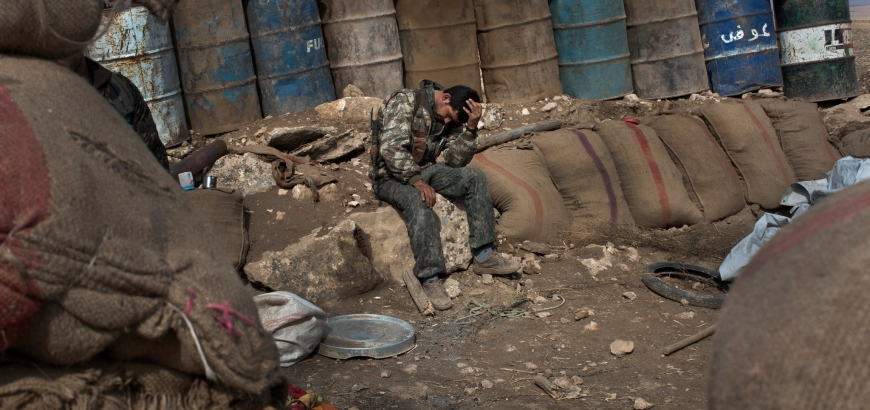The “Triangle of Death” front in southern Syria is one of the most important areas in the country and an arena for battles waged by Syrian rebels against regime forces and allied militias. Control over this area offers a strategic advance, opening the door to other military gains as it provides access to three vital areas in the Syrian south.
The Triange of Death connects the Daraa countryside, Damascus and Quneitra. The area is considered a primary defensive line for the western Damascus countryside and taking control of it means reaching the areas of Kanakar, Sasa, Beit Jen, and Gabaghib (south and southwest of Damascus).
The Daraa countryside is connected to the Triangle of Death by the villages of Kafr Nasej, Kafr Shams, Aqraba, Deir al-Bakht, Al-Teeha, and Deir al-Adas, which are all currently active fronts. The Assad regime and foreign militias are deploying on these axes.
Syrian rebel groups have taken control of the villages of Kafr Shams, Kafr Nasej, Aqraba, and Al-Teeha, while the regime and Hezbollah forces control the village of Deir al-Bakht.
With ongoing clashes, the village of Deir al-Adas is one of the most important points of contact between the opposition and the regime, which is concentrated with Iranians in the village's north, while in its southern outskirts are rebel groups from the Free Syrian Army, such as Farqat al-Hamza, Alwiya Qasioun, Alwiya al-Furqan, and Jaish al-Ababil.
Military sources in Daraa told Alsouria Net that Hezbollah fighter movements and Iranian forces had recently been observed moving toward the Western Ghouta, by way of the international Damascus airport, and had deployed near the village of Deir al-Adas. The sources predicted that their numbers would be close to 1,000 fighters including Iranian officers.
The Liwa al-Fatemiyoun militia (including Afghan and Iraqi Shiite fighters backed by Iran) has been leading the military operations in the village of Deir al-Adas near the western Damascus countryside.
The Triangle of Death area contains strategic hills on which regime forces are deployed and which form a military base close to the border with the Israeli-occupied lands.
Recently the military hills have been divided between the regime army and allied Shiite militias on the southern area axis, with Shiite militias controlling some of the most prominent of them, like Hill 121, which is home to around 1,000 fighters.
The militias also control the Dhibian hill to the west of the city of Al-Sanamayn. The hill overlooks the towns of Qeita and Kafr Shams, and was one of the most important supply routes for the rebel forces in the city of Al-Sanamayn until regime forces managed to take control over its outskirts and cut it off. This is now a garrison and assembly point for Assad forces and its militias in the Triangle of Death area.
The Assad regime still controls military positions in the Triangle of Death. Most prominently the Ninth Division in the city of Al-Sanamayn, halfway between the capital Damascus and Daraa, as well as many surrounding villages and towns between in the northern and northwest Daraa countryside.
This article was translated and edited by The Syrian Observer. Responsibility for the information and views set out in this article lies entirely with the author.


